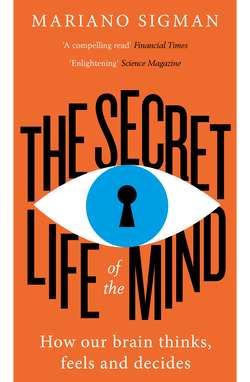Читать книгу The Secret Life of the Mind: How Our Brain Thinks, Feels and Decides - Mariano Sigman - Страница 15
Development of attention
ОглавлениеCognitive faculties do not develop homogeneously. Some, like the ability to form concepts, are innate. Others, like the executive functions, are barely sketched in the first months of life. The most clear and concise example of this is the development of the attentional network. Attention, in cognitive neuroscience, refers to a mechanism that allows us to selectively focus on one particular aspect of information and ignore other concurrent elements.
We all sometimes – or often – struggle with attention. For example, when we are talking to someone and there is another interesting conversation going on nearby.fn6 Out of courtesy, we want to remain focused on our interlocutor, but our hearing, gaze and thoughts generally direct themselves the other way. Here we recognize two ingredients that lead and orient attention: one endogenous, which happens from inside, through our own desire to concentrate on something, and the other exogenous, which happens due to an external stimulus. Driving a car, for example, is another situation of tension between those systems, since we want to be focused on the road but alongside it there are tempting advertisements, bright lights, beautiful landscapes – all elements that, as admen know well, set off the mechanisms of exogenous attention.
Michael Posner, one of the founding fathers of cognitive neuroscience, separated the mechanisms of attentionfn7 and found that they were made up of four elements:
(1) Endogenous orientation.
(2) Exogenous orientation.
(3) The ability to maintain attention.
(4) The ability to disengage it.
He also discovered that each of these processes involves different cerebral systems, which extend throughout the frontal, parietal and anterior cingulate cortices. In addition, he found that each one of these pieces of the attentional machinery develops at its own pace and not in unison.
For example, the system that allows us to orient our attention towards a new element matures much earlier than the system that allows us to disengage our attention. Therefore, voluntarily shifting our attention away from something is much more difficult than we imagine. Knowing this can be of enormous help when dealing with a child; a clear example is found in how to stop a small child’s inconsolable crying. A trick that some parents hit upon spontaneously, and emerges naturally when one understands attention development, is not asking their offspring to just cut it out, but rather to offer another option that attracts their attention. Then, almost by magic, the inconsolable crying stops ipso facto. In most cases, the baby wasn’t sad or in pain, but the crying was, actually, pure inertia. That this happens the same way for all children around the world is not magic or a coincidence. It reflects how we are – how we were – in that developmental period: able to draw our attention towards something when faced with an exogenous stimulus, and unable to voluntarily disengage.
Separating out the elements that comprise thought allows for a much more fluid relationship between people. No parent would ask a six-month-old to run, and they certainly wouldn’t be frustrated when it didn’t happen. In much the same way, familiarity with attentional development can avoid a parent asking a small child to do the impossible; for example, to just quit crying.
